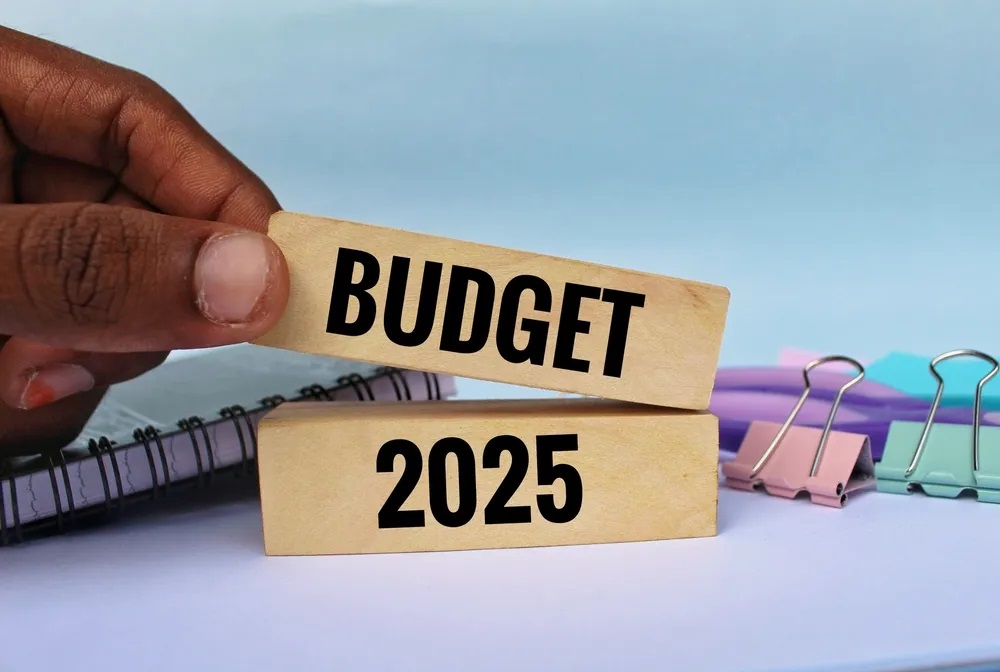1. Introduction: About six years ago, I wrote a piece on India’s economic health, which focused on the issues relating to its GDP growth, employment and self-employment opportunities created, public finances and the balance of payments. Given the current economic environment, I now focus on the last two issues and see how the Government of India’s 2025-26 Budget deals with them.
2. Public Finances: The Finance Minister has budgeted a total expenditure of Rs. 50,65,345 crore for the fiscal year 2025-26. Of this, interest payments have been budgeted Rs. 12,76,338 crore. This means that as much as 44.98 per cent of the total tax revenue (net to Centre) is eaten away by interest payments alone!
The Finance Minister has also budgeted Rs. 63,500 crore for Pradhan Mantri Kissan Samman Nidhi, and Rs. 2,03,000 crore for Pradhan Mantri Garib Kalyan Anna Yojana. I believe public money is supposed to be spent for (a) the provision of public goods or goods with huge positive externalities, that is, goods and services which the private sector will not provide (examples: national defence, control of pollution, elimination of open defecation, maintenance of law and order, and delivery of justice, and (b) the provision of private goods and services on equity grounds (example: employment under MGNREGA).
One does not know how much are the receipts from privatization of public enterprises and from monetization of public assets. The Government of India owns a large number of public enterprises and the Finance Minister, while presenting the Government of India’s budget for 2021-22 on February 1, 2021, had signalled the Government’s intent to privatize its enterprises like never before. This is what she had said: “In spite of COVID-19, we have kept working towards strategic disinvestment. A number of transactions namely BPCL, Air India, Shipping Corporation of India, Container Corporation of India, IDBI Bank, BEML, Pawan Hans, Neelachal Ispat Nigam Limited among others would be completed in 2021-22. Other than IDBI Bank, we propose to take up the privatization of two Public Sector Banks and one General Insurance company in the year 2021-22…. In 2021-22 we would also bring the IPO of LIC…. In the Atma-Nirbhar Package, I had announced that we will come out with a policy of strategic disinvestment of public sector enterprises. I am happy to inform the House that the Government has approved the said policy. The policy provides a clear roadmap for disinvestment in all nonstrategic and strategic sectors. We have kept four areas that are strategic where bare minimum CPSEs will be maintained and rest privatized. In the remaining sectors, all CPSEs will be privatized…. To fast forward the disinvestment policy, I am asking NITI to work on the next list of Central Public Sector companies that would be taken up for strategic disinvestment. To similarly incentivise States to take to disinvestment of their Public Sector Companies, we will work out an incentive package of Central Funds for States. Idle assets will not contribute to Atma-Nirbhar Bharat. The non-core assets largely consist of surplus land with government Ministries/Departments and Public Sector Enterprises. Monetizing of land can either be by way of direct sale or concession or by similar means…. In order to ensure timely completion of closure of sick or loss making CPSEs, we will introduce a revised mechanism that will ensure timely closure of such units.”
An annexure to the Finance Minister’s budget speech listed the objectives of the Government’s privatization policy and other details. The objectives include: (a) minimising presence of Central Public Enterprises (CPEs) and creating new investment space for private sector; and (b) post privatization, economic growth of CPEs will be through infusion of private capital, technology and best management practices. The four strategic sectors that the Finance Minister referred to in her budget speech are: atomic energy, space and defence; transport and telecommunications; power, petroleum, coal and other minerals; and banking, insurance and financial services. In these sectors, there will be bare minimum presence of public enterprises. The remaining CPEs in the strategic sectors will be privatised or merged or subsidiarized with other CPEs or closed. CPEs in non-strategic sectors will be privatised or closed.
With the Finance Minister having said this much, why has the Government of India not gone ahead with privatization? The Government of India alone has at least 250 enterprises, with many of them not qualifying to be in the public sector – they do not have huge positive externalities associated with them. They, therefore, need to be privatized. This will enable the Government to mobilize huge resources which it can use to repay its borrowings and even generate a surplus. This surplus, together with the savings on account of the Government not having to pay any interest on its borrowings, as also receipts from monetization of public assets, can be expected to add up to a really huge sum. This can be used for financing the huge investments required for building a Viksit Bharat.
3. Balance of Payments : India’s foreign exchange reserves currently amount to about $ 640 billion. We have not built these reserves through surpluses on current account, but we have been able to build them because of inflows like those on account of foreign direct investments, foreign portfolio investments, external commercial borrowings and NRI deposits. As seen recently, when we face some large outflows, the Rupee comes under pressure and it creates a lot of problems. I believe we must develop a strategy to substantially increase our exports of goods and services, generate surpluses on current account and add to our foreign exchange reserves.
It's good that the Finance Minister has decided to “set up an Export Promotion Mission, with sectoral and ministerial targets, driven jointly by the Ministries of Commerce, MSME, and Finance. It will facilitate easy access to export credit, cross-border factoring support, and support to MSMEs to tackle non-tariff measures in overseas markets." The Finance Minister has also decided that "Support will be provided to develop domestic manufacturing capacities for our economy’s integration with global supply chains. Sectors will be identified based on objective criteria. Facilitation groups with participation of senior officers and industry representatives will be formed for select products and supply chains.” I very much hope these initiatives produce the intended outcomes.
4. Concluding Remarks : The routes of privatization of public enterprises and export promotion can deliver the intended outcomes. But the journey along these routes is going to be very challenging. Much will depend on how the Government of India meets the challenges it faces.
- Anand P Gupta, Former Professor of Economics, Indian Institute of Management, Ahmedabad


